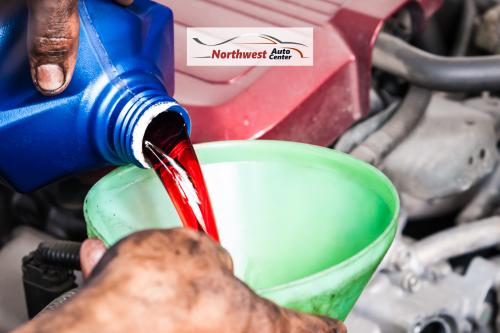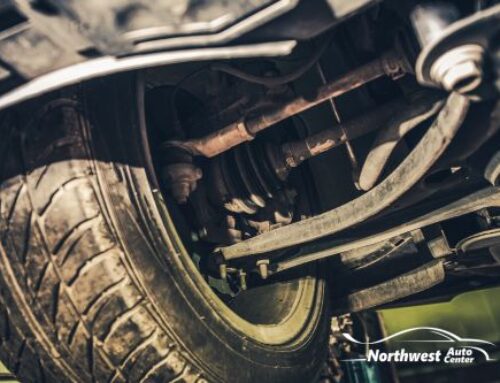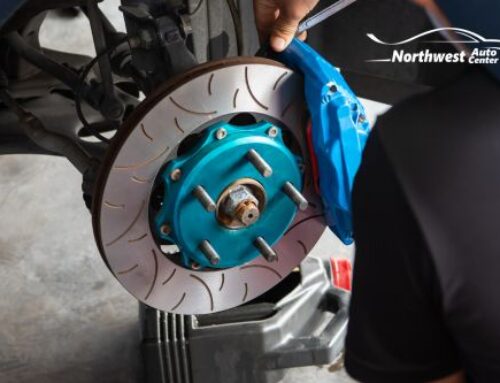
It should come as no surprise that transmission fluid is required to keep your car’s transmissions happy — and lubricated and cool.
Over time, transmission fluid does degrade or even leak, leading to significant transmission issues if not addressed. It should once again come as no surprise that this is something you want to keep an eye out for. Better yet — prevent!
What Is Transmission Fluid?
Before diving into the issues, it’s important to understand what transmission fluid does. In both automatic and manual transmissions, it plays a key role in ensuring smooth shifting of gears, reducing friction between the moving parts, and maintaining optimal operating temperatures.
Without it, the transmission would overheat and would quickly fail.
Transmission fluid comes in different types, depending on your vehicle’s make and model. Always refer to your vehicle’s owner manual for the specific type needed, as using the wrong kind can lead to poor performance and/or damage to the transmission.
Detecting Transmission Fluid Leaks
A transmission fluid leak is one of the most common issues that can occur. Early detection is crucial to prevent more severe problems.
Signs of a Leak
Puddle Under the Car
One of the easiest signs to spot is a puddle of red or dark brown fluid underneath your vehicle. Keep an eye out for a puddle or a stain when moving your vehicle.
Low Fluid Levels
If you frequently need to top off your transmission fluid, it indicates a leak. To check this, use the transmission fluid dipstick (usually located under the hood, most vehicles) to see if the levels are low. A dipstick reading that shows fluid below the “full” mark is a sign that something is wrong.
Burning Smell
A burning smell while driving or after parking your vehicle could indicate leaking transmission fluid hitting hot engine parts. This could also mean your fluid is burning due to overheating, leading to degraded fluid quality.
Both of these scenarios warrant immediate attention.
Identifying Degraded or Contaminated Transmission Fluid
Even if your transmission isn’t leaking, the fluid will degrade over time. Ideally, you want the transmission serviced based on your vehicle’s suggested schedule. But, if it has been awhile or if there are underlying problems, it’s good to know the signs of contaminated fluid.
Color Changes
Healthy transmission fluid is usually bright red or pink. Over time, it can darken, turning brown or black, which is a sign that the fluid has degraded and may no longer be providing optimal lubrication. If your fluid is dark, it’s time for a transmission service.
Strange Odors
Transmission fluid should not have a burnt or acrid smell. If you notice such odors while checking your fluid, it could mean that the fluid has been exposed to excessive heat, causing it to break down and lose its ability to protect your transmission.
Sluggish or Rough Shifting
One of the clearest signs that your transmission fluid is contaminated or degraded, is poor transmission performance. If your vehicle is slow to shift gears, shifts harshly, or you notice a delay between shifting and the vehicle’s response, degraded fluid may be the culprit. The transmission relies on clean fluid to operate smoothly, and dirty fluid can cause noticeable issues.
Maintaining to Avoid Repairing
Maintenance is key to avoiding costly repairs — get ahead of the problems instead of behind them. Here are some key tips to maintaining your vehicle’s transmission and fluids.
Check Fluid Levels Regularly
As with engine oil, it’s important to check your transmission fluid regularly. (This should be done whenever the engine oil is changed). Use the dipstick to monitor both the fluid level and its color. If the levels are low, add the appropriate fluid as specified in your owner’s manual.
Take low levels seriously. If it’s just been replaced or consistently low – schedule an appointment with your local auto shop.
Get Routine Fluid Changes
Just like engine oil, transmission fluid has a lifespan and needs to be changed at regular intervals.
For most vehicles, this is around every 30,000 to 60,000 miles, but you should check your owner’s manual for specific recommendations. Regular fluid changes ensure that your transmission stays well-lubricated and free from contaminants.
Inspect for Leaks
When you suspect a leak, it’s important to have a mechanic inspect the transmission system to identify the source. Common leak points include seals, gaskets, and the transmission pan. Some leaks can be fixed by tightening bolts or replacing gaskets, while others may require more extensive repairs. Addressing leaks early can save you from a costly transmission failure.
When to Seek Professional Help
While regular maintenance can help you avoid major transmission problems, some issues are beyond the scope of DIY fixes. If you’ve noticed persistent leaks, rough shifting, or a burning smell, it’s time to bring your vehicle to a professional mechanic. They can diagnose the exact cause and recommend the appropriate repairs or fluid changes to get your transmission back in top shape.
At Northwest Auto Center of Houston, we can help you with all your car maintenance and repair needs. Including the transmission and transmission fluid. Give us a call today at (281) 894-8880.






Leave A Comment
You must be logged in to post a comment.